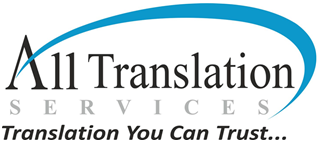How is translation helping the Native cultures in Canada?
___Also known as Aboriginals, indigenous people in Canada are the ones within the boundaries of Canada. The first thing to come to people’s minds is the English-French bilingual atmosphere when you think of the translation service provider in Canada.
The vast majority of the translation requirements in Canada are from English to Canadian French or Canadian French to English Translation. Yet there is a steady amount of translation required into Canada’s aboriginal languages. Management of aboriginal language projects is way different from managing more traditional ones.
Additionally, the lack of speakers left to inconvenient access to the internet or computers is the major issue for translators. Moreover, the cultural difference between indigenous traditions & mainstream businesses will create conflict and confusion.
Top indigenous languages in Canada based on the number of speakers
According to the Statistics Canada concerning the 2016 Census, the main aboriginal languages in Canada would be
Cree has around 96,575 speakers.
Inuit languages are consisting around 39,770 speakers.
Ojibwe contains approximately 28,130 speakers.
Oji-Cree with 15,585 speakers.
Dene is comprised of 13,005 speakers.
Most frequently translated languages
With several aboriginal languages and their different dialects usually, it is Inuktitut, Mohawk, Dene, Michif, Mi’kmaq, Cree, Oji-Cree, and even Stoney. As well as the translators reach out to the maximum number of aboriginal communities covering the most spoken languages.
However, provincial governments target the language spoken in their particular province.
To add more to the matter, the Quebec government would request the language be translated into Innu, Atikamekw, Naskapi, Mohawk, Inuktitut (Nunavik), and Cree (Quebec Cree).
In contrast, the Ontario government organization would like translations to Ojibway, Inuktitut, Ojicree, Mohawk, and Cree (one of the two Ontario Cree dialects).
Languages based on syllabic scripts
Meanwhile, not all aboriginal languages in Canada are based on syllabics. They are used for some Inuit languages, Algonquian languages, and Cree languages. In contrast, languages like Mi’kmaq, Mohawk, and Innu use roman letters. Additionally, for some languages like Dene, the Cree syllabics were adapted to write them at a point in time.
That being since basically, they were all oral languages instead, today it is written differently. As well as now a day, the writing system depends on many factors, just like dialects, and there is a tendency to write syllabic-based languages in Roman orthography.
Common misconceptions
It is often when the client wants a specific language to be understood by all aboriginal communities. For that reason, forgetting the many indigenous languages in Canada and overlooking the fact that there is no one ‘national’ aboriginal language.
Therefore, a single word in English, French, or any other language can be translated by a sentence in an aboriginal language and vice versa. Moreover, trying to make a comparison between the French/English and an aboriginal language structure is vague. Yet again, you have to explain to the client the concepts that are new to the indigenous language.
Conclusion
Being the global village the world is, there are often similarities in culture. Thus, religious beliefs play a massive part. Believing in the power of ancestors to intercede with God is a widespread belief across the globe. However, you should keep in mind that aboriginals have different cultures, and one particular aspect taken into notice might not exist among all the indigenous cultures.
